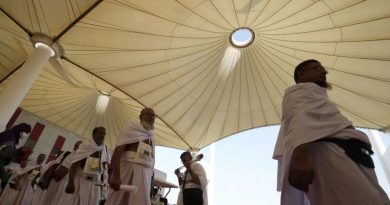Iran Threatens Arab States: Qatar, UAE, Bahrain, Kuwait in Crosshairs
Tehran — In a statement that has sent shockwaves across Gulf capitals, Professor Seyed Mohammad Marandi, a key voice in Iran’s strategic circles and former member of Tehran’s nuclear negotiating team, issued a dire warning on X (formerly Twitter) on Monday.
Responding to escalating tensions and recent remarks by U.S. President Donald Trump hinting at military involvement against Iran, Marandi declared that if the United States were to enter into war with Iran, the governments of Qatar, Kuwait, the United Arab Emirates, and Bahrain “would not last more than a few days, or even a few hours.”
“It’s time to leave Qatar, Kuwait, the United Arab Emirates and Bahrain immediately,” Marandi added ominously — a clear signal that Iran sees U.S. bases and partnerships in these countries as legitimate wartime targets. The statement comes amid increasing regional anxiety following Israeli strikes in Syria and Lebanon, and fears that a broader war involving Iran could engulf the Middle East.
Yet, what was more telling than Marandi’s threat was his silence on Saudi Arabia — the region’s heavyweight. This omission was not lost on analysts.
Aimen Dean, former MI6 spy inside Al-Qaeda and author of Nine Lives, pointed out the striking inconsistency. He wrote, “Iran’s Ariana News Agency just issued a threat that if the United States attacks Iran then it will retaliate against Kuwait, Bahrain, Qatar and UAE! No mention of Saudi Arabia, yet it’s all the same, as these countries are part of a mutual GCC defence treaty with Saudi.”
Strategic Messaging or Calculated Restraint?
Marandi’s threats appear designed to create fear and pressure among Gulf states that host American military assets, such as Al Udeid Air Base in Qatar and the Fifth Fleet in Bahrain. These are not empty words — they serve as psychological warfare aimed at dividing the Gulf Cooperation Council (GCC), deterring further cooperation with Washington, and shaking the confidence of local populations.
But the absence of Saudi Arabia in this threat matrix is intriguing. Some analysts believe it reflects Tehran’s ongoing efforts to preserve the fragile diplomatic thaw with Riyadh. Since the China-brokered rapprochement in 2023, Iran and Saudi Arabia have restored diplomatic ties and engaged in dialogue over Yemen, energy coordination, and regional security. Directly threatening Saudi Arabia now could reverse months of careful detente.
Others argue that Iran’s silence on Saudi Arabia is purely tactical. “Tehran knows that any overt threat to Riyadh would trigger a massive and unified GCC—and potentially wider Arab—response,” said a Gulf-based security expert. “It’s playing chess, not checkers.”
A Wider Conflict Looms?
As tensions soar between the United States and Iran, the Gulf region once again finds itself caught in the middle of a high-stakes confrontation. While Iran frames its threats as a response to potential aggression, its messaging exposes the vulnerability of smaller Gulf states and highlights their strategic importance to Washington’s military presence in the region.
The United States, for its part, has not publicly responded to Marandi’s threats. However, military readiness has increased in the region. Additional U.S. naval deployments to the Gulf and increased coordination with Israel signal that Washington is preparing for multiple scenarios.
Meanwhile, GCC member states are left to weigh the risks. The threat of being used as a battlefield in a confrontation between Washington and Tehran looms large. Yet, so does the cost of abandoning decades of military and economic cooperation with the United States.


